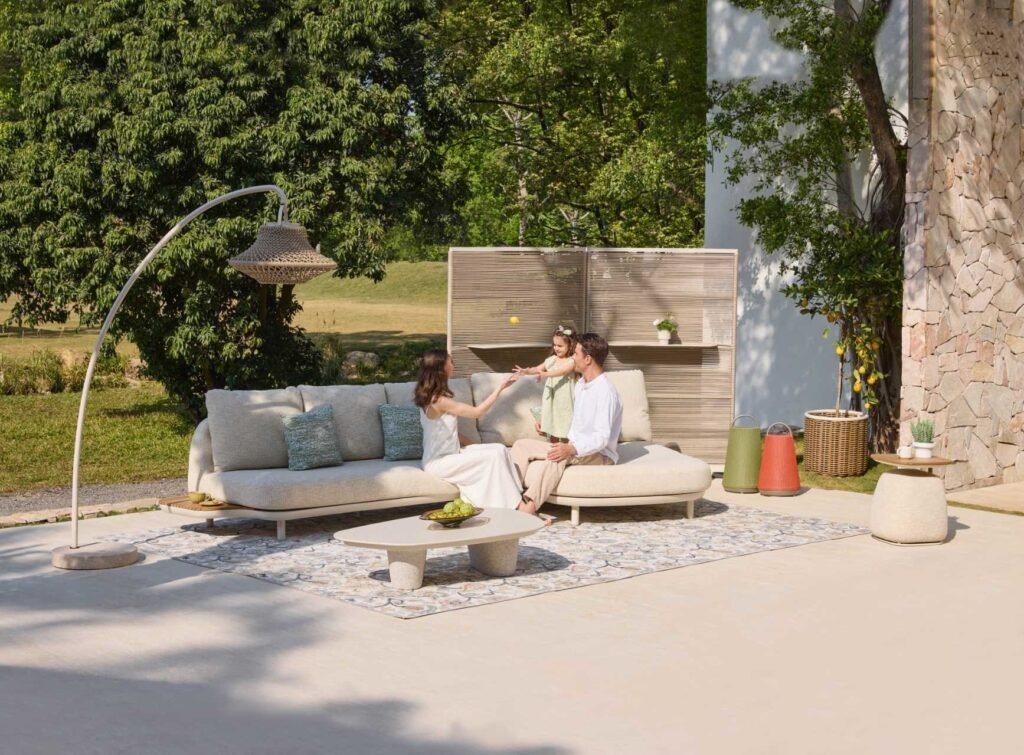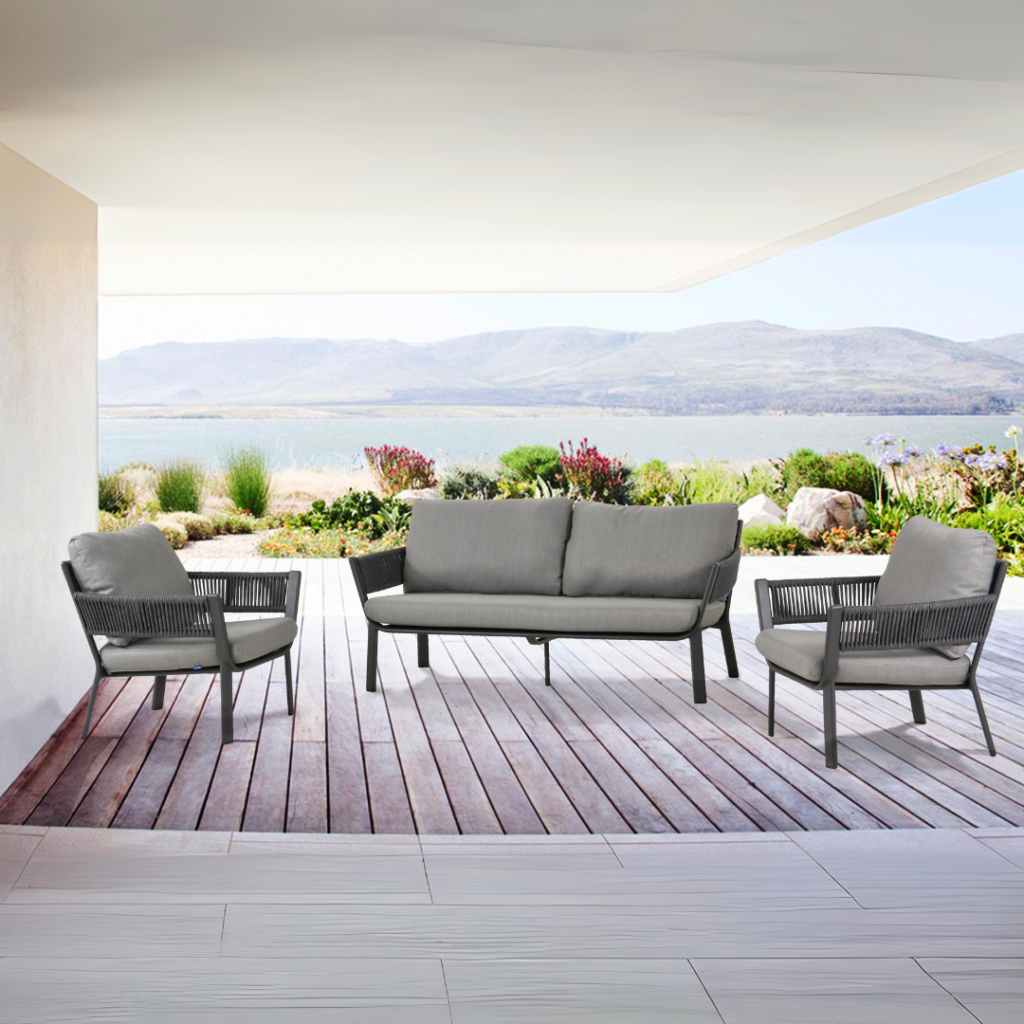Spring New Arrivals: Up to 50% OFF Selected Items
How to Clean Outdoor Sofas: Easy Tips for Maintenance
Outdoor living in Australia is an experience marked by long, sun-drenched afternoons, balmy evenings, and the ease with which daily life spills from the lounge room into the backyard. Alfresco dining, laid‑back Sundays, catch-ups with friends, or simply soaking up the peace—a well‑furnished outdoor area becomes an extension of the home. The true hero in this space? The wicker and teak outdoor sofa. Yet, as sturdy as today’s premium pieces are, outdoor furniture faces more than its fair share of challenges, including the regular cleaning required to keep them in top condition.
Rain, wind, pollen, sticky sunscreen, bird droppings, and even the family pooch are relentless. How your outdoor furniture, including your sofa, looks and performs months and years down the track depends entirely on the maintenance and care you provide. Satisfyingly, taking proper care isn’t complex; it just requires a little know‑how and a willingness to keep those key habits ticking over.
Here’s how to keep your outdoor sofa’s upholstery fresh, comfortable, and ready for action season after season.

Understanding Outdoor Sofa Materials
Before picking up a cleaning solution or scrubbing brush, take a minute to consider what your furniture is made from. Most quality Australian outdoor sofas combine several materials:
- Powder-coated aluminium frames
- Teak timber elements
- UV-stable synthetic rope
- All-weather, quick-dry foam cushions
Each surface, including wicker, has different needs, and understanding these, along with using appropriate fabric protection, can help prevent issues like rust, so knowing what you’re working with can make all the difference.
Here’s a breakdown of common outdoor sofa materials and their considerations:
| Material | Exposure Risks | Cleaning Needs | Longevity Boosters |
| Powder-coated aluminium | Corrosion, dust | Mild soap, water, soft cloth | Rinse after storms/frequent use |
| Teak timber | Greying, mildew | Timber cleaner, soft brush | Re-oil or seal yearly |
| Synthetic rope/weave | UV fade, mildew | Mild detergent, gentle scrubbing | Hose off regularly |
| Outdoor fabric | Mould, stains | Spot clean, fabric-safe sprays | Dry out after rain, covers |
Start by checking manufacturer advice; different brands may use unique blends or coatings that can impact care.
Routine Cleaning: Small Efforts, Big Payoffs
Consistent light cleaning, guided by effective cleaning tips, is by far the easiest way to uphold your outdoor sofa’s looks and longevity. Rather than a tiresome chore, it’s barely more involved than a quick kitchen tidy.
A weekly or fortnightly surface cleaning, especially during heavy use or high pollen/count seasons, quickly pays itself back:
- Dust or brush loose debris: Use a soft brush for crumbs, sand, and leaves.
- Quick wipe-down: Soak a microfibre cloth in diluted mild detergent (dish soap and warm water work well). Wipe all frame and solid surfaces.
- Cushion shake and air: Remove and pat cushions outdoors to refresh and air out the foam.
It’s surprising how effective such brief sessions can be in preventing unsightly build‑up, spiderwebs, and odour, especially when combined with regular fabric protection treatments.
Tackling Cushions and Fabrics
Outdoor cushions are engineered to dry rapidly and resist mould, but even the best designs can’t perform miracles. A spill, dropped sausage, rainstorm, or forgotten towel can quickly escalate.
For most outdoor-grade fabrics (like those stocked by Uno Pick), maintenance, including spot cleaning and stain removal, is simple:
- Immediate spot clean: For new spills, blot the area with an absorbent cloth before using a small amount of gentle soap and water. Avoid scrubbing, which can drive stains deeper.
- Regular refresh: If removable, unzip cushion covers. Machine wash on a cold, gentle cycle with mild detergent, but check the label first.
- Dealing with mould or mildew: Mix four parts water with one part white vinegar. Spritz over spots, let it sit for 10–15 minutes, then rinse thoroughly and air dry in the sun if possible.
Leave the covers off and the cushion cores popped up—sunshine and airflow are your best allies for drying out any lurking dampness. Don’t store away while damp.
If your cushions aren’t removable, vacuum surfaces and seams, perform spot cleaning as necessary, apply fabric protection where possible, and use fabric-safe cleansers according to instructions. Always spot test new cleaners on an inconspicuous area.
Frame Care: Metal, Wood, Rope and More
Each structural element of outdoor sofas, including wicker, has its quirks. Frequent wiping down with a damp cloth is ideal, but it helps to get a little more specific:
Powder-Coated Frames (Aluminium or Steel)
- Rinse off dust and salt (especially near the coast).
- Wipe with a mixture of warm water and a small amount of dish soap.
- Dry thoroughly with a towel to prevent water spots and rust.
- If marks persist, such as rust or other blemishes, a dab of non-abrasive car polish can restore shine without damaging the powder coat.
Timber (Teak, Eucalyptus, Acacia)
Weathering is not failure—many Australians love the silvery look hardwoods develop. If you prefer to maintain their golden-brown hue, especially with teak furniture, regular maintenance with a few small interventions helps:
- Gently scrub with timber cleaner and a soft brush.
- Rinse well, allow to dry, then apply outdoor furniture oil or a timber sealant as directed.
- Wipe spills and standing water promptly to stop stains and watermarks.
Rope and Woven Detailing
The best synthetic ropes withstand harsh UV, but dust, sunscreen and mud can accumulate:
- Shake or vacuum off dry debris from wicker furniture for easy cleaning.
- Use a gentle detergent in water, lightly scrub with a soft brush, then rinse.
- Let air dry completely before using again.
- Tough stains may call for a diluted vinegar solution or fabric-specific cleaner with fabric protection, and specialized stain removal techniques might be necessary. Always avoid bleach and hard wire brushes.
Deep Cleaning: Occasionally, Go Further
Sometimes, a seasonal overhaul is called for—before a big celebration, at the end of winter, or after a particularly wild summer.
- Remove all soft furnishings: Cushions and throws need their own washing routine, especially when maintaining outdoor furniture.
- Give frames, fixed parts, and upholstery a thorough once-over: Brush, hose, then clean by hand, paying attention to joins, feet, or under seat slats where grime builds up.
- Inspect for damage: Tighten loose bolts, fix rust spots, and treat scratches on metal frames with touch-up paint.
- Deodorise: A fresh air session helps, but some surfaces respond well to a baking soda sprinkled, then vacuumed after sitting for an hour.
A deep cleaning need only take place a couple of times a year, or when you notice persistent odours or marks, and incorporating specific cleaning tips can make this process more efficient.

Smart Prevention: Less Cleaning, More Relaxing
A little strategic prevention, such as applying fabric protection, keeps cleaning sessions much shorter and your outdoor furniture looking brand new for longer.
- Use covers: Fitted weather-resistant covers protect wicker furniture from dust, rain, and sun fade. Remove and air out regularly.
- Store cushions under cover: When rain is forecast, grab-and-go storage bins or deck boxes are perfect for fast protection.
- Position with purpose: If possible, arrange sofas under eaves, pergolas, or umbrellas to reduce long-term UV and water exposure.
- Address accidents promptly with spot cleaning: The quicker you tackle spills and bird droppings, the less they stain, and consider using specialized stain removal products for stubborn issues.
With these small habits and regular maintenance, you’ll significantly cut down on the elbow grease required week-to-week.
Special Considerations for Australian Conditions
Australia’s outdoor lifestyle comes with unique challenges: powerful sun, unpredictable storms, salty coastal air, and sometimes, four seasons in a day. Sourcing furniture from a local, expert manufacturer, like Uno Pick in Melbourne, helps reduce risks like rust and does a lot of heavy lifting in this respect.
But even the highest standards of construction and materials benefit from a little local nous:
- In bushfire zones, clean away leaf litter and debris from between cushions and frames—this reduces embers’ risk.
- In humid northern climes, battle mould by airing furniture more frequently and cleaning after heavy downpours.
- Coastal areas see more salt spray, so rinse metal surfaces monthly and check for signs of rust and corrosion.
A quick quarterly “health check” lets you spot problems early and act before minor issues become expensive repairs.
Troubleshooting: Stains, Smells and More
A stain or persistent odour doesn’t have to spell disaster. Here are some common issues and the recommended way forward:
- Bird droppings or tree sap: Let dry, then carefully scrape away. Treat with soapy water and a cloth.
- Rust spots: Lightly sand with fine grit paper, then paint over with metal-protective touch-up paint.
- Persistent mildew: For stubborn spots, try a commercial outdoor fabric cleaner. If that doesn’t work, a dilute bleach solution (1 part unscented bleach to 10 parts water) can be used as a last resort—test on a hidden section first.
- Faded timber: Sand lightly and re-oil for a refreshed look.
Prevention is always preferred, but swift, gentle attention to mishaps usually fixes them quickly.
When to Seek Professional Help
- Some situations warrant bringing in the professionals, especially for large commercial settings, precious pieces, or after major weather events, where expert fabric protection and restoration are needed:
- Significant water damage or mould outbreaks that do not respond to normal cleaning.
- Structural repairs that involve tightening, welding, or replacing components.
- Deep cleaning of fine woven, wicker, or rope detailing that is delicate or stained.
Engage reputable outdoor furniture cleaners who can restore your sofa’s appearance safely.
Enjoying Every Moment Outdoors
Outdoor sofas, especially those made from durable materials like teak, are central to the Australian lifestyle. Keeping yours clean isn’t about relentless work—it’s about establishing cleaning habits and incorporating helpful cleaning tips for your sofa’s upholstery that mean more time lounging, napping, reading, or hosting, and less time scrubbing. With just a bit of care and attention, today’s high-performance designs will keep your outdoor space looking fresh and ready for whatever comes next.
The rewards for a clean, well maintained outdoor sofa extend far beyond appearances, highlighting the importance of regular cleaning. Comfort, safety, and even the lifespan of your investment all depend on regular upkeep. So, next time you head outside for an afternoon coffee or entertain a houseful of mates, feel confident your sofa is as ready as you are for easy Australian living.

